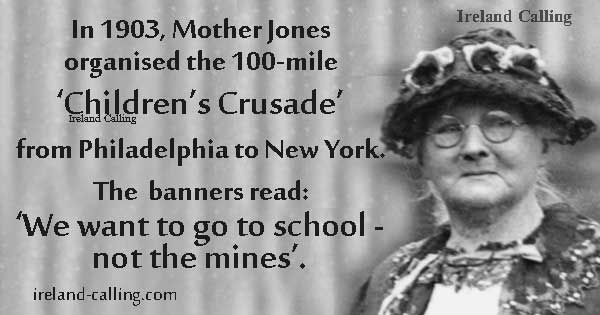august-top.html
1822 The Irish Constabulary Act was set up on this day in 1822. It created a set of regional county police forces. It was another sign of the British authority in Ireland. The country had already seen failed rebellions in 1798 and 1803. Over the next few decades the country was devastated by the Potato Famine, and the lack of compassion shown by the authorities for the Irish peasants. Feelings of resentment towards the British continued to grow throughout the 19th century.
* * *
1837 Mother Jones was baptised in Cork on this day in 1837. The exact date of her birth is unknown. She moved to Canada as a teenager and then on to America where she began working as a teacher. Jones got married and started a family. She also opened a dressmaking shop which she ran after giving up her job as a teacher. Two terrible events then changed her life forever…
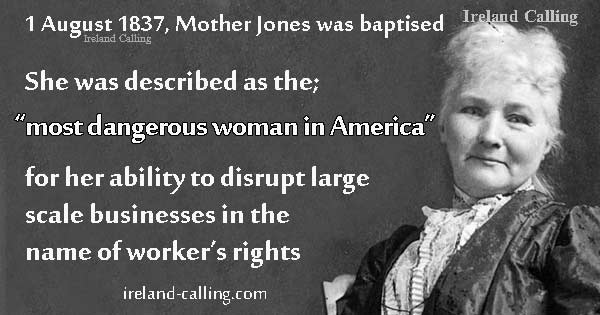
Find out more and read Mother Jones’ fascinating story here;
Click here to read about more great characters from Irish history
* * *
1910 Cathal Gannon was born in Dublin on this day in 1910. He was known as one of the finest Irish harpsichord makers and piano restorers of his generation. Gannon was also a skilled pianist himself.
Gannon developed an interest in the harpsichord as a teenager, after reading a book about the revival of the instrument. He requested permission to examine the harpsichords in the National Museum in Dublin, but was not granted extended access until he was in his twenties. He studied the instruments, but decided that they were too expensive to buy and too complicated to make.
He worked as a furniture maker as a youngster before he lost his job. He spent several years out of work, and filled his time by buying and restoring old watches, furniture and pianos.
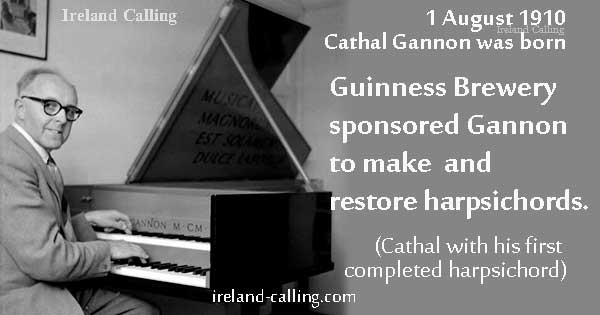
Gannon married in 1936 and his father-in-law was a collector of keyboard instruments. Gannon made a miniature version of one of the instruments he had seen at his father-in-law’s home. Gannon’s replica harpsichord was played in public by John S Beckett, who was so impressed that he persuaded the Guinness Brewery to sponsor Gannon in his work.
Gannon’s reputation grew and he was soon recognised as the leader in his field. He was the subject of numerous television shows and was also awarded an honourary degree by Trinity College Dublin for his contribution to the authentic performance of early music in Ireland.
* * *
1915 Irish nationalist Jeremiah O’Donovan Rossa was buried in Glasnevin Cemetery on this day in 1915. He had spent much of his life fighting for Irish independence and was a prominent member of the Irish Republican Brotherhood.
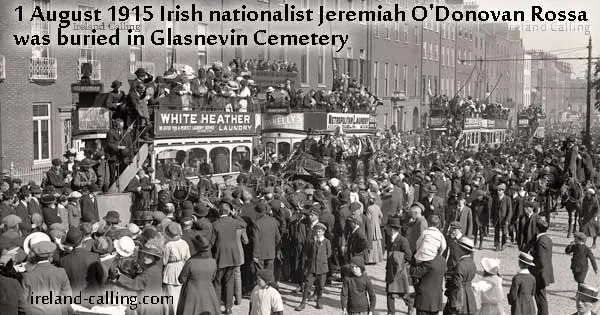
He was exiled to America but continued to organise the Irish nationalists from there. He arranged the first ever use of explosions by Irish nationalists in English cities in the 1880s. The British government demanded he be extradited but were unsuccessful.
Rossa became seriously ill in his later life and died in Staten Island, at the age of 83. News of his death reached Ireland, and nationalist Thomas Clarke led the calls for the body to be returned to Ireland.
At his funeral Pádraig Pearse made an emotional speech at the graveside which has gone down in history. Pearse’s speech inspired a new generation of Irish nationalists and the Easter Rising followed less than a year after Rossa’s death.
Here is an extract from Pearse’s speech:
“They think that they have pacified Ireland. They think that they have purchased half of us and intimidated the other half. They think that they have foreseen everything, think that they have provided against everything; but, the fools, the fools, the fools! — They have left us our Fenian dead, and while Ireland holds these graves, Ireland unfree shall never be at peace.”
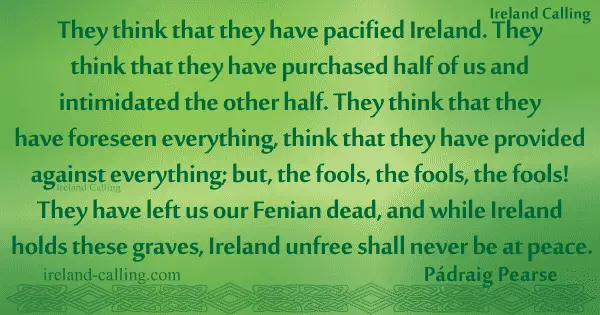
Glasnevin Cemetery is the final resting place for many important Irish figures. The graves of several nationalist fighters from the early 20th century can be found in Glasnevin, as well as famous writers poets and musicians. It is a popular site for visitors to Dublin, particularly those interested in Irish history.
Click here to read about the Easter Rising
Click here to read about other popular tourist attractions in Dublin
* * *
1931 Seán Ó Riada was born in Cork on this day in 1931. He was a musician and composer and played a major role in the revival of Irish music in the 1960s. He was an accomplished pianist and fiddler but his greatest skill was as a musical arranger.
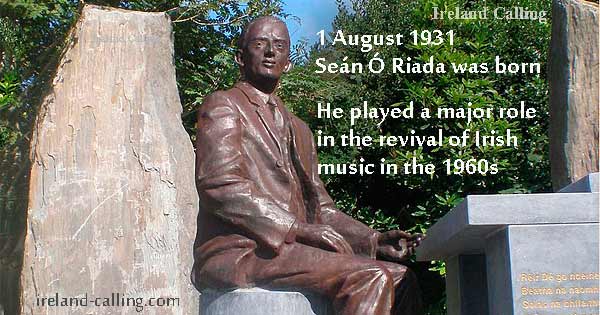
Ó Riada worked at the Abbey Theatre and on radio and wrote and arranged numerous successful pieces. However, he was best known as part of the group Ceoltóirí Chualann. They played traditional Irish music and re-introduced several songs and instruments that had fallen by the wayside. Unlike other show bands of the era, Ceoltóirí Chualann didn’t let the different instruments compete for the audience’s attention, but instead created arrangements that allowed all the instruments to complement each other.
* * *
1979 Happy birthday to Bernadette Flynn, born in Tipperary on this day in 1979. She is an Irish dancer and was one of the stars of the popular productions Lord of the Dance and Feet of Flames.
Flynn began Irish dancing as young as four, and won countless titles throughout her childhood. She auditioned for Lord of the Dance in 1996, and when she was successful she left school to begin her career as a professional dancer. Her audition was so successful that she was given the lead role of Irish colleen Saoirse in the show.
Michael Flatley has said of Flynn: “Dancing with Bernadette is like dancing with the air, you don’t have to look and see where she is. You can feel her no matter where she is on the stage.”
august-bottom.html
